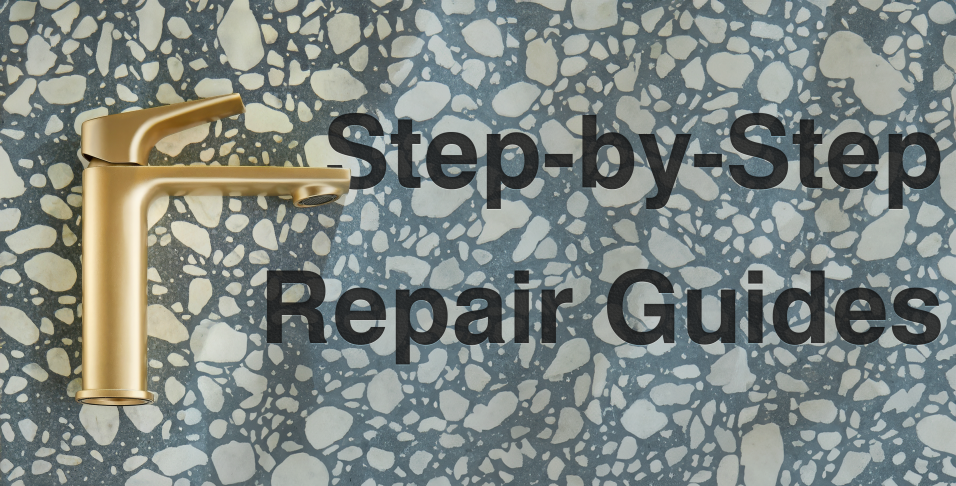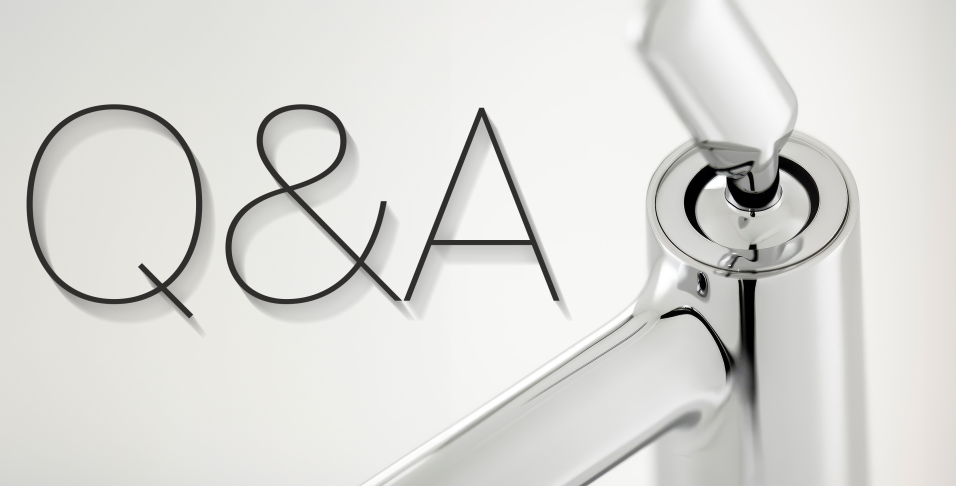| Tags | walk-in bath bath easy riser montana priya tray sizes anti-slip shower tray sizes shower tray freestanding baths geberit aquaclean aquaclean carron corner bath carron baths show all posts |
Common Issues with Bathroom Taps and How to Fix Them
Every day living would be incomplete without functional bathroom taps, which make cleaning and personal hygiene much easier. But a variety of problems with the bathroom taps that homeowners frequently run into might throw off daily routines. The good news is that, given some knowledge, diagnosing and fixing many typical tap issues is really simple. This site attempts to help you identify common tap problems and offer detailed solutions so that your bathroom taps run as well as possible with the least amount of trouble.
Examining Your Tap Issues
Locating Leaks
Not only is a dripping tap annoying, but over time it can result in substantial water waste and higher expenses. First, look to see if the tap is leaking any water when it is turned off. This might happen at the tap's base, where it joins the sink, or at the spout. Leaks in mixer taps can also start where the handles and spout join.
Leaks are often caused by worn-out washers, failing O-rings, or deteriorated valve seating. Washers are frequently the source of dripping taps. Also deteriorating and losing their efficiency are O-rings, which give single-handle taps a tight seal. A focused repair depends on knowing which particular component is leaking.
Falling Water Pressure
A low-pressure bathroom tap's feeble flow can make routine chores like brushing your teeth or washing your hands incredibly ineffective. You can diagnose this problem by comparing the flow rate of the impacted tap to other taps in your home. If the problem only affects a single tap, it might be the aerator, which can clog with mineral deposits and debris, impairing water flow.
Because partially closed valves can limit water flow, another simple check is to make sure the supply valves beneath the washbasin are fully open. Check the flexible supply lines for any bends or other impediments that could also reduce water pressure. Restoring your tap's best performance starts with identifying these problems.
Tools and Preparations
Essential Tools
Getting the proper tools together is crucial before you begin your repair. An Allen key set, pliers, screwdriver, and adjustable wrench should be part of any basic toolbox for tap repairs. For certain repairs, such as changing an O-ring or washer, you may need a spanner and a tap valve reseating tool. With these instruments close at hand, you can carry out the repair quickly and effectively.
Safety First
Safety has to come first before any repair work is started. To stop any unforeseen water flow during repairs, make sure the main water supply is cut off. Plugging the sink is another smart idea to prevent small parts like washers and screws from falling down the drain. To provide yourself with enough room and light to work comfortably and safely, clear the space under the sink last. These safety measures would guarantee a secure repair environment and help prevent any accidents.

Step-by-Step Repair Guides
Fixing a Dripping Tap
Dripping taps are commonly caused by worn washers or damaged cartridges. Here’s how to replace them:
Turn off the Water Supply: Ensure the water supply is completely shut off to avoid any mishaps.
Remove the Tap Handle: Use a screwdriver to remove the handle screw, often hidden under a decorative cap which can be gently pried open.
Dismantle the Tap: With the handle off, use an adjustable wrench to unscrew the tap body or cartridge. For compression taps, you'll see the washer at the base of the stem; for mixer taps, you’ll access the cartridge.
Replace the Faulty Component: Replace the worn washer or the entire cartridge. Make sure the replacement part is the correct size and fit.
Reassemble the Tap: Once the new washer or cartridge is in place, reassemble the tap components in reverse order.
Test Your Tap: Turn the water supply back on and check the tap for leaks, ensuring everything operates smoothly.
Addressing Low Water Pressure
Low water pressure can often be remedied by cleaning aerators and checking for blockages.
Remove the Aerator: The aerator can be unscrewed from the tap’s spout. Use pliers if necessary, but wrap them in cloth to prevent scratching.
Clean the Aerator: Soak the aerator in vinegar to dissolve lime scale and debris. Use a small brush to clean out the fine mesh.
Check for Blockages: Inspect both the aerator and the tap itself for any additional blockages or buildup of mineral deposits.
Reattach the Aerator: Once cleaned, screw the aerator back onto the tap.
Assess Water Pressure: Turn on the tap to check if water pressure has improved. If problems persist, further investigation of the pipes and hoses might be necessary.
Solving Water Temperature Issues
If your tap fails to deliver the correct water temperature, adjustments to mixer valves or thermostats may be required.
Access the Mixer Valve: Most mixer taps allow easy access to the thermostat or mixer valve via a panel or cover.
Adjust the Valve: Use a suitable tool, often an Allen key or screwdriver, to adjust the mixer valve. Incremental adjustments will help find the optimal setting.
Test the Temperature: Continually test the water output as you adjust, ensuring it is suitable for use.
Secure Everything Back in Place: Once the desired temperature is achieved, secure any panels or covers back on the tap.
Replacing Old Taps
Choosing and installing a new tap can refresh your bathroom’s look and functionality:
Select the Right Tap: Consider the sink’s hole configuration, tap size, and your bathroom’s style. Compatibility with your existing plumbing is crucial.
Remove the Old Tap: After turning off the water supply, disconnect the water lines under the sink and use a basin wrench to remove the nuts holding the tap in place.
Install the New Tap: Position the new tap and secure it with the mounting nuts. Connect the water lines, ensuring all connections are tight and secure.
Test the Installation: Turn the water supply back on and check for leaks or operational issues.

When to Call a Professional
While many tap issues can be fixed at home, situations such as persistent leaks, major water pressure problems, or installation of complex tap systems should be handled by a professional. If you encounter extensive corrosion, unclear installation instructions, or issues with the main water line, it’s advisable to seek professional help.
Long-term Maintenance Tips
Regularly cleaning your taps, checking for wear and tear, and promptly addressing minor issues can prevent major repairs. Annually inspect your taps for any deterioration and ensure that your home’s water pressure is at a healthy level. Regular maintenance not only prolongs the life of your taps but also ensures they function efficiently and reliably.
Water Saving Advice
It's good for the environment and can save you money on water bills, making your bathroom taps more efficient. Aerators are a cheap and easy step to install; they lower water flow while keeping pressure constant, giving the impression of a full stream with less water being used. Fitting a flow regulator will help you use less water, even further. Furthermore, preventing water waste entails identifying and correcting leaks as soon as possible. For those seeking bigger improvements, low-flow taps are made to use a lot less water than standard types.
Latest Innovations in Tap Technology
Tap technology is constantly developing and adding features that improve hygiene and convenience. Because they only run when they sense hands beneath them, motion-sensing touchless taps stop germs from spreading and save water. Furthermore, integrated water filtering systems in taps provide safe, clean drinking water straight from the tap, eliminating the need for bottled water and reducing plastic waste. These contemporary fixes give your bathroom a hint of luxury along with environmental advantages.
To sum up
Everyday efficiency and convenience depend on having smoothly operating bathroom taps. From easy fixes to contemporary renovations, this book offers the necessary procedures and advice to handle typical tap problems. This knowledge will help you maintain the best possible condition for your taps and adopt environmentally responsible habits. Please feel free to comment or give feedback if you have any questions or need any more advice.

FAQ Section
Why does my tap make a noise when turned on?
This could be the result of a malfunctioning washer, high water pressure, or air in the pipes. This problem may normally be fixed by checking the washer and making sure the water pressure in your house is within normal bounds.
How often should I replace my tap washers?
Every year, washers should have their wear evaluated and changed as necessary. The faster deterioration in hard-water locations may require more frequent replacements.
Can I replace my taps myself?
Indeed, many tap replacements are doable as do-it-yourself projects with the right tools and close attention to detail. But complicated models or installation-related problems ought to be left to the pros.
What is the best way to clean my taps?
It works well to clean frequently with a small soap and water solution. Steer clear of strong chemicals since these can harm the tap's finish. Vinegar works to soften and eliminate mineral deposits.
How can I tell if a tap is high quality?
Look for taps with a long guarantee that covers both finish and operation, as well as those made of durable materials like solid brass. High-quality taps frequently feature ceramic disc technology for increased life and performance.
Call to Action
Discover the top brands and the newest developments in tap technology among Bathroom Supplies Online's extensive selection of premium taps. Our eco-friendly models and the newest technologies, such as touchless operation and integrated water filtration, have something for every bathroom. For more do-it-yourself instructions, upkeep advice, and home improvement ideas to keep your house looking great and running smoothly, subscribe to our blog.

 5 Star Rated 2036 reviews
5 Star Rated 2036 reviews



